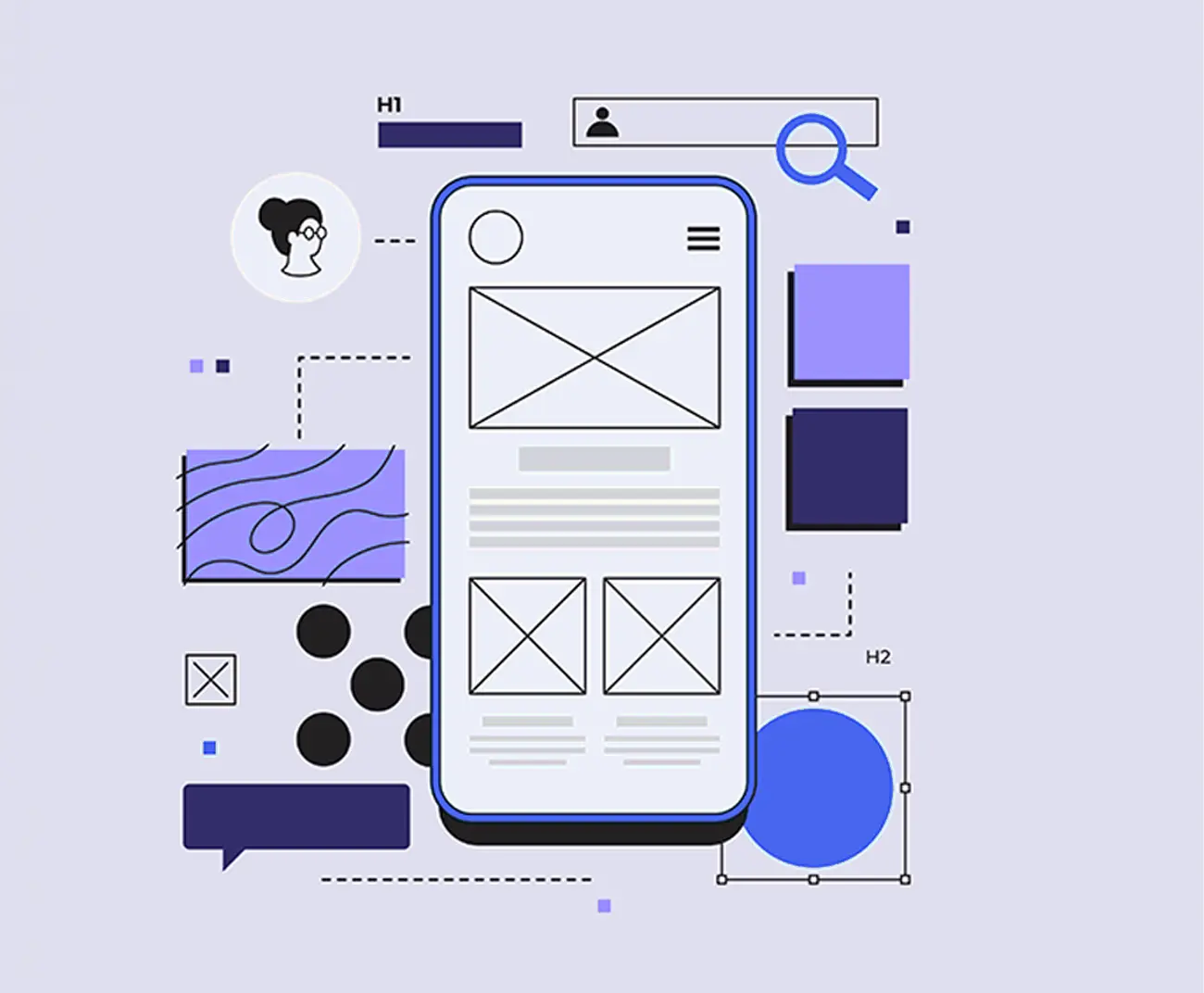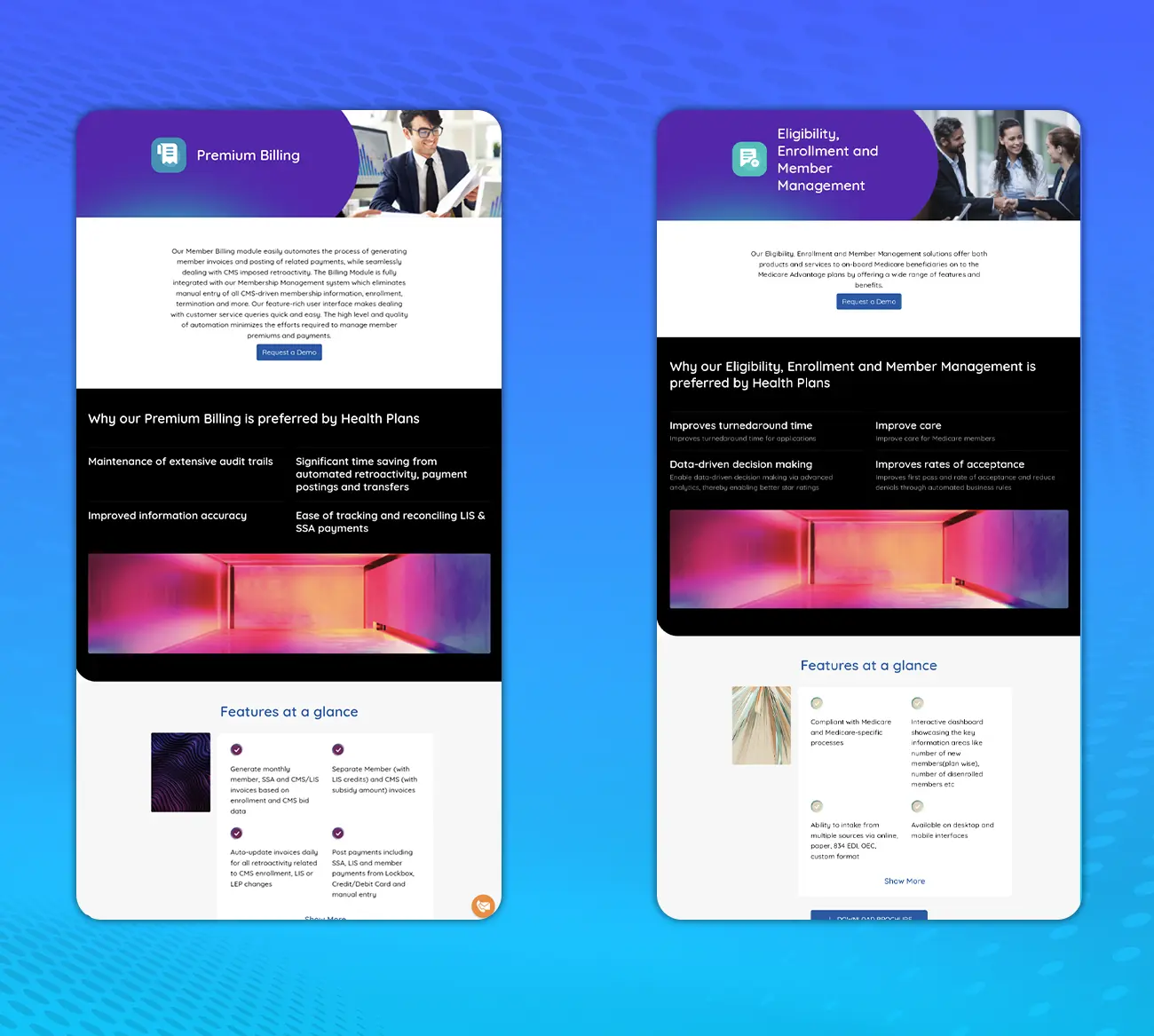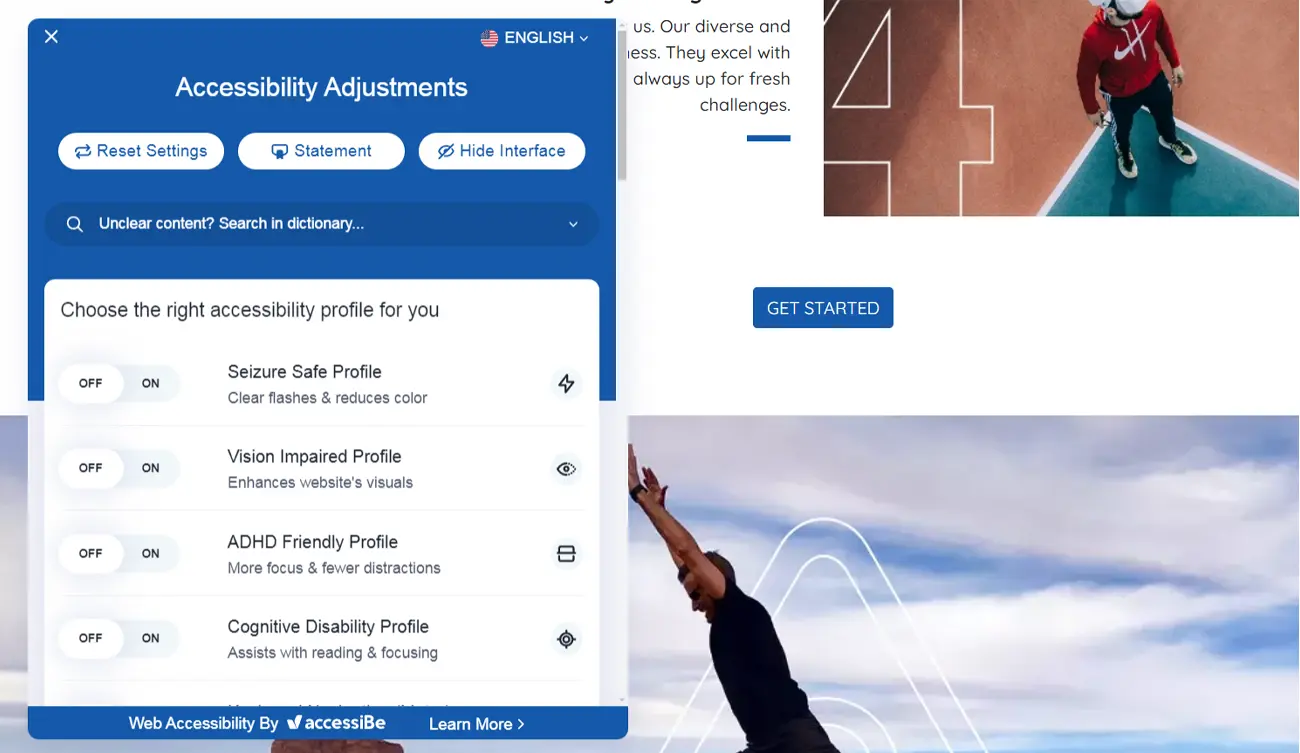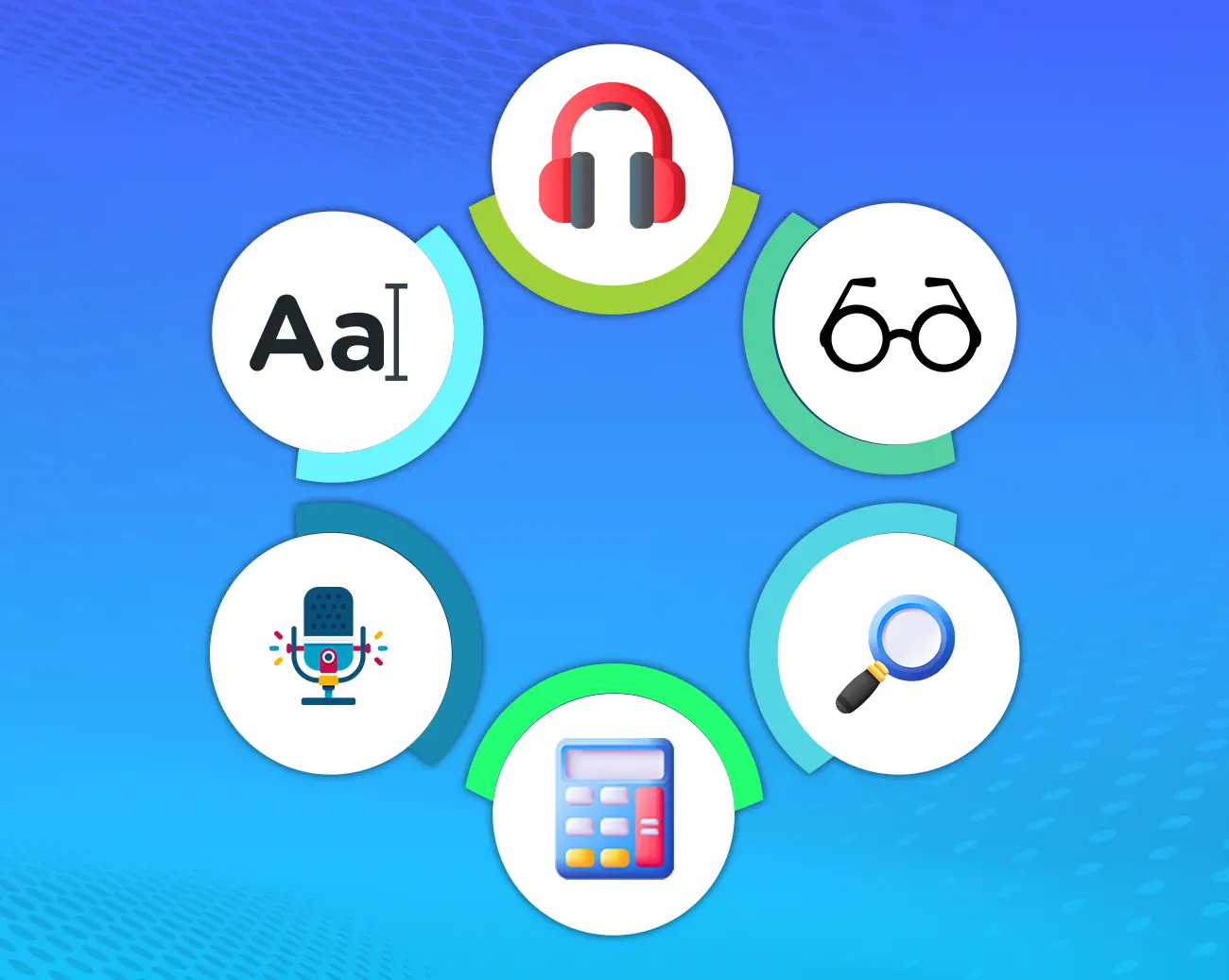Have you ever struggled with any confusing healthcare website or app with a cluttered interface or complicated navigation keys? That’s frustrating, right? Now imagine this difficulty amplified for millions of people with disabilities (PWDs) trying to navigate the same system. It’s a hundred times harder! These barriers aren't just inconvenient for them but also create a digital divide that can disrupt equal access to healthcare services.
The good news is the healthcare industry is making strides towards inclusivity. User experience (UX) and user interface (UI) design are no longer seen as extras but as essential tools for creating a smooth and accessible experience for all patients. Here's the key: accessibility isn't just about aesthetics; it's about ensuring everyone, including people with disabilities, can easily use healthcare technology.
This is where section 508 compliance comes into play. Established by the U.S. government, the 508 standard sets guidelines for accessible electronic and information technology (EIT). By following these guidelines, healthcare providers can build digital tools that work for everyone, including those with disabilities.
In this blog post, we'll explore the connection between UX/UI design and the 508 standard. We'll discuss the benefits of accessible healthcare technology and show you how Mirra Health Care's full-stack development services can guide you through this crucial aspect of healthcare I.T. development.
The Intersection of UX/UI and Section 508 Compliance
Great healthcare UX/UI design isn't just about sleek visuals and trendy features. At its core, it's about creating a user experience that's intuitive, navigable, and accessible for everyone. This becomes even more crucial when considering the growing number of patients who rely on assistive technologies to interact with digital healthcare tools. Here's where the 508 standard steps in, acting as a bridge between good UX/UI design and accessibility for people with disabilities (PWDs).
The Power of Good UX/UI for Accessibility
Think about the last time you used a healthcare website or app. Was the text easy to read, even on a smaller screen? Could you find the information you need quickly and easily without getting lost in a maze of menus? These are all aspects of good UX/UI design that directly contribute to accessibility. Here's how:

- Clear Navigation: Intuitive menus and breadcrumbs help everyone, but especially those with cognitive or visual impairments, navigate the system effortlessly. Imagine a patient with low vision – a clear, well-labeled navigation bar makes finding appointment booking information a breeze.

- Simple and Consistent Interface: A user interface free of clutter and unnecessary animations ensures a smooth experience for those using screen readers or other assistive technologies. Think about a patient with motor skills limitations – large, well-spaced buttons are easier to interact with than tiny, close-together ones.

- Mobile Responsiveness: With the rise of mobile healthcare, ensuring websites and apps are responsive across devices is crucial. This caters to users with dexterity limitations who might rely on touchscreens or voice commands.
Read more: 4 Benefits of Outsourcing to Third-Party Administrators | Mirra HC
508 Standard: Specific Requirements for Healthcare Apps
The 508 standard outlines specific criteria for accessible electronic and information technology (EIT). While it doesn't dictate design aesthetics, it provides a framework for features that ensure inclusivity. Here are some key requirements relevant to healthcare applications:

- Keyboard Accessibility: All functionalities should be accessible using a keyboard alone, catering to users with mobility limitations or who rely on screen readers.

- Screen Reader Compatibility: Content should be structured and formatted in a way that's easily interpreted by screen reader software, allowing visually impaired patients to access information independently.

- Alternative Text Descriptions: Images and other non-text elements need clear and concise alternative text descriptions, ensuring users with visual impairments understand their purpose.
Examples of How Section 508 Compliance Improves User Experience for PWDs
By adhering to the 508 standard and incorporating accessible UX/UI design principles, healthcare providers can significantly improve the user experience for PWDs. Here are some real-world examples:
- A patient with dyslexia can easily navigate a healthcare portal thanks to clear, uncluttered menus and dyslexia-friendly fonts.
- A visually impaired patient can book an appointment independently using a screen reader that accurately describes the online form and its functionalities.
- A patient with limited hand mobility can easily schedule a telehealth visit using voice commands on their smartphone due to a mobile-responsive and well-designed app.
By creating inclusive healthcare technology, providers not only fulfill legal requirements but also demonstrate a commitment to equitable access for all patients. This fosters trust and loyalty, ultimately leading to a more positive and productive healthcare experience for everyone.
Read more: Optimize Healthcare with BPaaS Solutions | Mirra HC
The Benefits of 508 Compliance in Healthcare

While adhering to the 508 standard ensures legal compliance for federally funded healthcare organizations, the benefits of building accessible healthcare technology extend far beyond avoiding lawsuits. Here's how section 508 compliance creates a win-win situation for both healthcare providers and patients.
Fulfilling an Ethical Responsibility
Healthcare is a fundamental right, and digital tools shouldn't create barriers for anyone. By ensuring accessibility, providers demonstrate a commitment to serving all patients equally. Imagine a deaf patient who relies on sign language interpreters. A 508-compliant telehealth platform with built-in captioning functionality empowers them to participate in virtual consultations with ease. This fosters trust and strengthens the patient-provider relationship.
Improved Patient Satisfaction and Engagement
Frustration with inaccessible healthcare websites and apps can lead to patient dissatisfaction and disengagement. A 2021 survey found that a vast majority of internet users with disabilities have encountered major difficulties using websites. 508 compliance tackles this head-on. When patients can easily navigate appointment scheduling, access lab results, and manage their health information independently, satisfaction and engagement soar.
Increased Patient Reach and Retention
In the U.S. alone, over 61 million adults live with a disability, according to the CDC. By creating inclusive healthcare technology, providers tap into a vast and underserved market. Imagine a patient with low vision who previously struggled to use a confusing hospital website. A 508-compliance accessible redesign with high-contrast text and screen reader compatibility empowers them to become active participants in their own healthcare journey, potentially leading to increased patient loyalty and retention.
Potential Cost Savings
Lawsuits stemming from non-compliance with accessibility standards can be expensive. The Department of Justice has settled numerous such cases for significant sums. By proactively ensuring 508-compliance from the outset, healthcare providers can avoid these legal battles and associated financial burdens.
Investing in the Future of Healthcare
Building accessible technology from the ground up ensures a future-proof care management system that caters to everyone. This investment in inclusivity positions healthcare providers as forward-thinking leaders who prioritize equitable access for all.
With Mirra Health Care's full-stack development services and user interface design services, you can seamlessly integrate 508-compliance into the development process. This means you can create inclusive healthcare technology that empowers all patients, not just some.

How Mirra's Full-Stack Development Services Ensure 508 Compliance
At Mirra, we understand that accessible healthcare technology isn't just a checkbox exercise; it's about creating an inclusive experience for all patients. That's why 508-compliance is woven into the very fabric of our full-stack development process. Here's how we ensure your healthcare applications meet accessibility standards and empower everyone to navigate their health journey with ease.
Seamless Integration from the Start

We don't wait until the finish line to consider accessibility. Our development process integrates 508-compliance from the initial planning stages. This means we collaborate with accessibility specialists throughout the project lifecycle, ensuring every design decision and line of code adheres to the standard guidelines.
Building with Assistive Technology in Mind

Our solutions are built with compatibility in mind. We prioritize features like keyboard navigation, screen reader compatibility, and clear focus indicators. This ensures patients using assistive technologies like screen readers or voice commands can interact with your healthcare app or website effortlessly.
Automated Testing and Ongoing Monitoring

Mirra utilizes a robust suite of automated accessibility testing tools. These tools scan your application for potential compliance issues, allowing us to identify and fix them early in the development cycle. We also conduct manual testing to double-check functionality and ensure a smooth user experience for everyone.
Beyond Compliance: User Experience for All

Our commitment goes beyond simply meeting the bare minimum. We believe in creating user experiences that are intuitive, user-friendly, and cater to diverse needs. This includes features like clear and concise language, proper color contrast, and responsive design for optimal viewing on any device.
By partnering with Mirra, you gain a development team dedicated to building inclusive healthcare technology. We'll guide you through the 508-compliance process, ensuring your applications are accessible and user-friendly and empower all patients to take charge of their health.
The Bottom Line
Inclusive healthcare tech isn't optional; it's essential. Partner with Mirra to build accessible solutions that empower all patients. Gain improved engagement, wider reach, and future-proof technology. Contact Mirra today for 508-compliant development!













